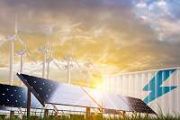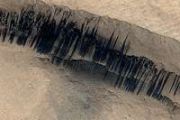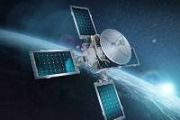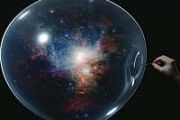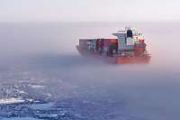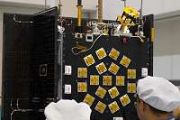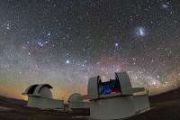
Copernical Team
First exoplanet image from James Webb Space Telescope revealed
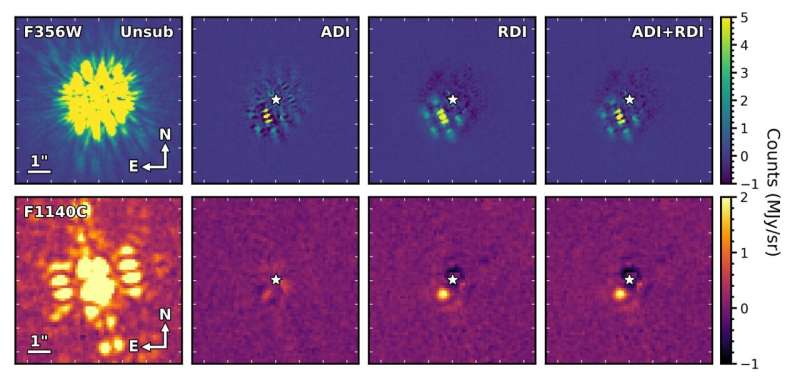
Video: 'Fuel to Mars' study heads to moon
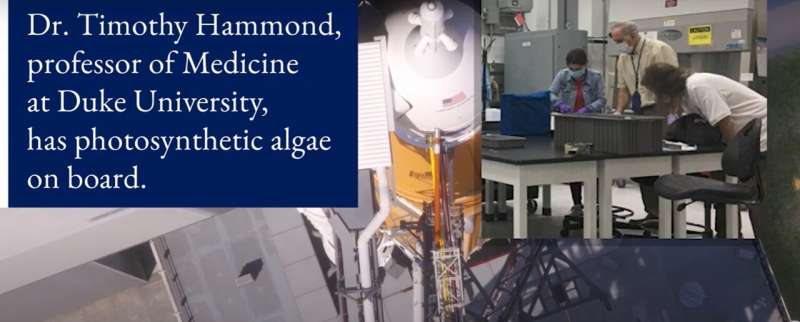
A Duke research study is preparing to blast off to the Moon with NASA on Artemis I.
Dr. Tim Hammond, professor of medicine at Duke, and co-investigator Dr. Holly Birdsall created the "Fuel to Mars" study to identify genes and gene pathways that fuel-producing algae use to survive deep space. A duplicate control experiment is housed at the Durham VA hospital to see how the algae grow without exposure to radiation and microgravity.
Their findings could help pave the way for future human space explorers.
The Artemis I, which has been delayed once already, is scheduled to blast off Saturday.
Explore further
Plant growth in China's space lab in good condition
 The seeds of two plants in China's Wentian lab module have germinated and are now in good condition, according to a briefing on the progress of plant culture experiments in the country's space station on Monday.
Seed samples of the two plants, Arabidopsis and rice, were installed in the life ecology experiment cabinet of the lab module, which went into space in July. The space growth exper
The seeds of two plants in China's Wentian lab module have germinated and are now in good condition, according to a briefing on the progress of plant culture experiments in the country's space station on Monday.
Seed samples of the two plants, Arabidopsis and rice, were installed in the life ecology experiment cabinet of the lab module, which went into space in July. The space growth exper Solar satellite breaks ground with new data
 China's solar observation satellite has achieved major scientific and technological feats during its in-orbit operation, according to the China National Space Administration.
The satellite Xihe, named after the sun goddess in ancient Chinese mythology, has carried out spectral scanning and imaging of the sun's H-Alpha waveband and has recorded the dynamics of the solar activities in the st
China's solar observation satellite has achieved major scientific and technological feats during its in-orbit operation, according to the China National Space Administration.
The satellite Xihe, named after the sun goddess in ancient Chinese mythology, has carried out spectral scanning and imaging of the sun's H-Alpha waveband and has recorded the dynamics of the solar activities in the st Chang'e-5 reveals an intermediate stage in space weathering process of lunar soils
 This study is conducted by a joint team from Chinese Academy of Sciences. They use aberration-corrected transmission electron microscopy (TEM), Electron-energy loss spectroscopy (EELS) and scanning transmission electron microscopy (STEM) to examine the microstructures and chemical compositions at nano/atomic scales of 25 soil grains (1-3 um in size) from Sample CE5C0400YJFM00507 (1.5 g).
T
This study is conducted by a joint team from Chinese Academy of Sciences. They use aberration-corrected transmission electron microscopy (TEM), Electron-energy loss spectroscopy (EELS) and scanning transmission electron microscopy (STEM) to examine the microstructures and chemical compositions at nano/atomic scales of 25 soil grains (1-3 um in size) from Sample CE5C0400YJFM00507 (1.5 g).
T A Whole New World - Sols 3578-3579
 After a successful 13 meter weekend drive, Curiosity finds itself in the middle of "Marker Band" valley. The underlaying bedrock has changed dramatically over the last week, from dark and nodular to light-toned and relatively smooth. This area has been of interest to the science team since Gale crater was first selected as the landing site, 10 years in the making!
The orbital mineralogical
After a successful 13 meter weekend drive, Curiosity finds itself in the middle of "Marker Band" valley. The underlaying bedrock has changed dramatically over the last week, from dark and nodular to light-toned and relatively smooth. This area has been of interest to the science team since Gale crater was first selected as the landing site, 10 years in the making!
The orbital mineralogical An Unexpected Stop during Sols 3580-3581
 We kicked off Curiosity operations this morning with the news that our previous drive did not complete as planned. Some of the sand in the area caused the rover to veer ever-so-slightly off course, which then caused the right side of the vehicle to just clip the edge of a large rock.
When the onboard safety check sensed the wheels were climbing a feature larger than anticipated, Curiosity
We kicked off Curiosity operations this morning with the news that our previous drive did not complete as planned. Some of the sand in the area caused the rover to veer ever-so-slightly off course, which then caused the right side of the vehicle to just clip the edge of a large rock.
When the onboard safety check sensed the wheels were climbing a feature larger than anticipated, Curiosity MIT's MOXIE experiment reliably produces oxygen on Mars
 On the red and dusty surface of Mars, nearly 100 million miles from Earth, an instrument the size of a lunchbox is proving it can reliably do the work of a small tree.
The MIT-led Mars Oxygen In-Situ Resource Utilization Experiment, or MOXIE, has been successfully making oxygen from the Red Planet's carbon-dioxide-rich atmosphere since April 2021, about two months after it touched down on
On the red and dusty surface of Mars, nearly 100 million miles from Earth, an instrument the size of a lunchbox is proving it can reliably do the work of a small tree.
The MIT-led Mars Oxygen In-Situ Resource Utilization Experiment, or MOXIE, has been successfully making oxygen from the Red Planet's carbon-dioxide-rich atmosphere since April 2021, about two months after it touched down on A vast and mysterious valley system in the southern Martian highlands
 These images, acquired using with DLR High Resolution Stereo Camera (HRSC), reveal a chaotic region on our neighbouring planet. It is located near Holden Crater in the southern Martian highlands and is part of a vast valley system through which considerable masses of water once flowed in a northerly direction.
The HRSC has been mapping the Red Planet on board ESA's Mars Express spacecraft
These images, acquired using with DLR High Resolution Stereo Camera (HRSC), reveal a chaotic region on our neighbouring planet. It is located near Holden Crater in the southern Martian highlands and is part of a vast valley system through which considerable masses of water once flowed in a northerly direction.
The HRSC has been mapping the Red Planet on board ESA's Mars Express spacecraft MAVEN and EMM make first observations of patchy proton aurora at Mars
 NASA's MAVEN (Mars Atmosphere and Volatile Evolution) mission and the United Arab Emirates' Emirates Mars Mission (EMM) have released joint observations of dynamic proton aurora events at Mars. Remote auroral observations by EMM paired with in-situ plasma observations made by MAVEN open new avenues for understanding the Martian atmosphere. This collaboration was made possible by recent data-shar
NASA's MAVEN (Mars Atmosphere and Volatile Evolution) mission and the United Arab Emirates' Emirates Mars Mission (EMM) have released joint observations of dynamic proton aurora events at Mars. Remote auroral observations by EMM paired with in-situ plasma observations made by MAVEN open new avenues for understanding the Martian atmosphere. This collaboration was made possible by recent data-shar 













